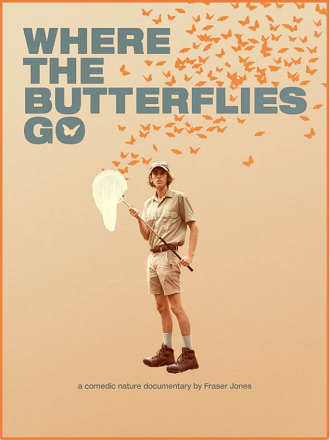
Where the Butterflies Go 2021
Distributed by Collective Eye Films, 1315 SE 20th Ave. #3, Portland OR 97214; 971-236-2056
Produced by Fraser Jones, Jillian Bass, Salathiel Lopez Campos, Trevor May, and Kevin Wall
Directed by Fraser Jones
Streaming, 72 mins
High School - General Adult
Ecology; Educational Films; Environmentalism
Date Entered: 09/26/2023
Reviewed by Amanda McCormick, Sr. Asst. Librarian and Liaison Librarian to Chemistry and Physics, University at Buffalo, State University of New YorkThe remarkable migration of the monarch butterfly from the northeastern United States to central Mexico has entranced many a filmmaker; WorldCat indexes over 100 such films. In a new entry to the genre Where the Butterflies Go director and lead Fraser Jones documents his quest to educate the “world” about this fascinating species as he follows the monarch butterflies' migration from Canada to Mexico. Along the way, he interviews several monarch butterfly enthusiasts and scholars, such as a volunteer at a monarch butterfly sanctuary in Illinois, the director of Monarch Watch at the University of Kansas, and a biology professor from Oklahoma State University. The interviews are informative and discuss topics such as global warming and the role of pollinators in our ecosystem. Another segment highlights a visit to a citizen science event in Ontario, Canada where we see how monarch butterflies are tagged with an electronic chip to track their migration. The last interview of the film is a lovely segment with a park manager at the Sierra Chincua Sanctuary in Mexico, where we finally see the monarch butterfly in the wild.
It’s hard not to be charmed by the earnest and enthusiastic energy of the protagonist in this film, especially when he shares that he was inspired to be a nature educator by the late Steve Irwin. The film is strongest when he engages with his interview subjects, kids and adults alike. But there are times when the film veers into the absurd with the behind-the-scenes footage, which does not add to the main story. The personal reflections shared by Jones are touching, but it is a difficult task to sync that narrative with the educational focus of the film, and unfortunately the film fails on this point. The film might be best used to illustrate the importance of citizen science in supporting local ecosystems. It is recommended for students in high school and above.
Published and licensed under the Creative Commons Attribution 4.0 license. Anyone can use these reviews, so long as they comply with the terms of the license.